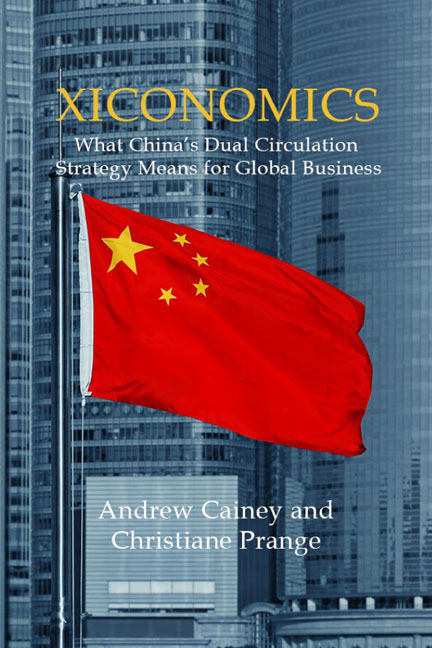2 - Dual Circulation: more continuity than change
Published online by Cambridge University Press: 23 January 2024
Summary
In 2011 the CEO of a US multinational met a senior Chinese official in a Shanghai Starbucks store. “What impresses you the most about China?” asked the official. “The speed of change. How fast everything moves. How it changes,” replied the CEO. “Really? Do you think so?” teased the official. “But we have been talking about the same policy challenges for many years – the need to have more consumption, the need to upgrade our economy and innovate, the need to reduce reliance on debt finance, the ageing population. Not much is changing. And yet – look outside. People are satisfied; things are working; everyone is getting richer. We have time and space to resolve our issues,” the official concluded.
The strategic choices that Xi Jinping announced for his Dual Circulation Strategy in 2020 were in fact not so new. Xi highlighted the need to strengthen China's own technological capabilities and to expand domestic consumer demand as the mainstay of China's future growth. Yet 14 years earlier, in 2006, the messages had been the same. China's future growth was to be based on home-grown “indigenous innovation”, and the growth of China as a consumer market. Even then the internal was to be favoured over the external. Xi's policy is more continuity than change.
A report by the Carnegie Endowment for International Peace at that time observed that, “in recent years, China has paid more attention to furthering the development of domestic Chinese standards and tech-nologies. It has done so largely to upgrade the country's industrial base, thus retaining more added value, but it has also done so to secure a seat at the table where global standards are set.”1 The 2006 Medium and Long-Term Programme for Science and Technology (MLP) set criteria for the accreditation of so-called national indigenous innovation products (NIIPs). These NIIPs would receive preference in public pro-curement. The plan included technologies such as biotech, information technology, advanced materials and manufacturing, energy technology, marine technology, laser technology and aerospace technology.
- Type
- Chapter
- Information
- XiconomicsWhat China's Dual Circulation Strategy Means for Global Business, pp. 25 - 34Publisher: Agenda PublishingPrint publication year: 2023



